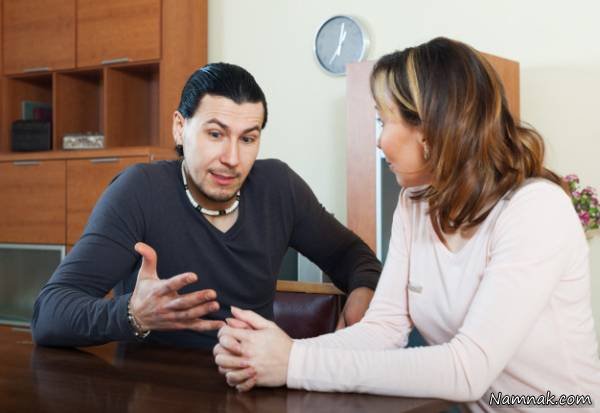Howto apologize?Request forgiveness with confidence
In this article, we will explore why apologizing is crucial, and we will look at how to ask for forgiveness sincerely and with integrity when you make a mistake. If you want to learn the proper ways to apologize when you hurt someone, read this section fromSelMagzRead it.
What is an apology?
An apology is a statement that contains two key elements:
• It acknowledges the harm that your actions have caused to someone else.
We all need to learn how to apologize because, after all, no one is perfect.
We all make mistakes, and we can all hurt people through our behavior and actions, whether intentionally or accidentally.
Apologizing is not always easy, but it is the most effective way to restore trust and balance in a relationship when you have done something wrong.
Why should we apologize?

There are many reasons why you should sincerely apologize when you have unnecessarily hurt someone or made a mistake. First, an apology opens a dialogue between you and the other person. A willingness to admit mistakes can give the other person a chance to connect with you and share their feelings. When you apologize, you acknowledge that you are aware of your unacceptable behavior. This helps you rebuild trust and reconnect with the other person.
It also gives you a chance to discuss what is not acceptable.
How to Apologize Effectively
How to apologize appropriately: Let’s look at all the steps.
Step 1: Express regret:
Every apology should begin with two magic words: “I’m sorry” or “I apologize.” This is essential because these words critically address your actions. For example, you might say: “I’m sorry for snapping at you yesterday. You must feel embarrassed and hurt by how I acted.” Your words should be sincere and genuine.
Be honest with yourself and the other person about why you want to apologize.

If you have unpleasant motivations, don’t apologize, and if you see it as a way to end an argument, your apology won’t be sincere or effective. Timing is also crucial. As soon as you realize you have wronged someone, apologize.
Step 2: Accept responsibility;
Next, accept responsibility for your actions or behavior and acknowledge that you know what you did. Here, you need to empathize with the person you wronged and show that you understand how you impacted their feelings. Don’t assume; instead, try to put yourself in their shoes and imagine how they feel.
For example: “I know I hurt your feelings when I held your hands; I’m sure that embarrassed you, especially since others on the team were there. I was wrong to treat you that way.”
Step 3: Make amends:
When you apologize, take action to set things right. Here are two examples: “If there’s anything I can do for you, please let me know.”
“I realized I was wrong to underestimate your ability to lead your staff meeting. I want you to lead tomorrow’s meeting to showcase your skills.”
Think carefully about this step. Insincere gestures and empty promises can harm your relationships more. Because you feel guilty, you might be tempted to offer more than is appropriate, so please keep moderation in what you propose.
Step 4: Don’t promise that this will never happen again:The final step is to explain that you will not repeat this action or behavior. This step is crucial because it assures the person that you intend to change your behavior. It helps you rebuild trust and repair the relationship. However, you can say: “From now on,I will manage my stress to avoid hurting you and the rest of the team, and I want you to remind me if I do this again.”

Make sure to follow through with this commitment in the coming days or weeks. If you promise to change your behavior but don’t follow through, you undermine your credibility with others.
More strategies for effective apologies:
Don’t make excuses when apologizing:
During an apology, many people are tempted to explain their reasons for their actions. This can be helpful, but lengthy explanations can often turn into excuses and undermine your apology. When trying to lessen responsibility, don’t attribute any blame to someone or something else.
An example of using excuses in an apology: “I’m sorry for snapping at you yesterday when you came into my office. I was overwhelmed with work, and my boss had asked for the project report an hour earlier than planned.” In this case, you justify your rude behavior with the “excuse” of stress and assume that the other person is to blame because they upset you on a busy day. This makes you appear weak.

Important points about apologizing:
When apologizing, make sure you are honest with yourself.
There is a good balance between complete responsibility and over-responsibility.
Don’t expect immediate forgiveness!
Remember that the other person may not be ready to forgive what has happened.
Give the person time to heal and don’t rush them.
For example, after you apologize, you might say: “I know you may not be ready to forgive me, and I understand how that feels.”
I just wanted to say I’m sorry. It’s time for me to change my behavior.
Be aware of legal issues:
Keep in mind that in some countries and regions, the law may interpret an apology as an admission of responsibility or guilt. Before you apologize on behalf of your organization, you may need to discuss it with your boss or seek further legal advice from a lawyer. However, don’t use this as an excuse not to apologize unless there is significant risk involved.
Tip 1 inApologizing::
When you apologize, be fair and honest; if you act aggressively or unjustly, you may lose respect from the person you’re apologizing to, as well as those around you.
Tip 2 in apologizing:
Don’t ask for forgiveness or apologize again; the person might have easily moved past the issue, and you can end up escalating an argument unnecessarily.
Key pointWhat is an apology??
An apology is a statement that captivates others when you have made a mistake. It can be tough, but it can significantly help improve relationships and rebuild trust.

When you apologize, follow these steps:
- Express regret
- Accept responsibility
- Attempt to make amends
- Promise it won’t happen again
When you apologize, don’t make excuses; otherwise, it may seem like you are just trying to absolve yourself from the person or the issue.







